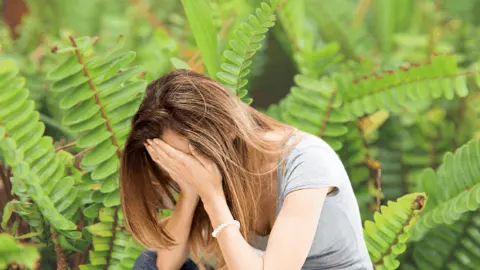Let’s look at the hardest houseplants to grow.
It seems the reason for houseplants that are hard to grow is that houseplant enthusiasts do fail to mimic the natural environment of these very plants.
It all makes sense when you think about it.
Houseplants such as tropicals are often used to very high levels of humidity, a requirement that can’t be met in many people’s homes.
Unless you apply some magic, that is elevate humidity levels with the help of certain tools & tricks.
That said, let us now have a look at the hardest houseplants to grow indoors. Enjoy!
Hardest Houseplants to Grow
The hardest houseplants to grow are:
- African Violet
- Bonsai
- Bonsai Fern
- Croton
- Gardenia
- Maidenhair Fern
- Polka Dot Begonia
- Succulents
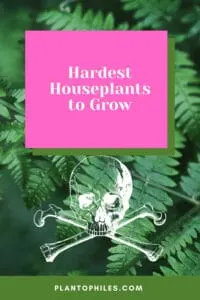
Hardest Houseplants to Grow
Table of Contents

Hardest Houseplants to Grow
The Hardest Houseplants to Grow
My hardest houseplants to grow are not necessarily your hardest houseplants to grow.
I for example cannot grow Philodendron Melanochrysum or Aglaonema Pictut Tricolor and had multiple specimens of each.
However, these are the honorable mentions of the hardest houseplants to grow that we heard mentioned time and time again.
African Violet
African Violets are among the most popular flowering houseplants. And at first glance,
African Violet does not look all that difficult: They thrive at average room temperatures 60-75°F (16 to 24 degrees Celsius), they demand bright, indirect sunlight and as far as watering goes, it is best to keep the soil lightly moist at all times.
That all sounds pretty standard, right?
Yes. Yet there are many plant parents out there complaining that they just can’t keep their African Violets alive.
If you don’t believe us, just open Facebook and browse through the various Facebook Houseplants Groups and you will quickly stumble upon threads about
“The most difficult houseplants to keep alive” and the name African Violets will pop up there quite frequently.
So what is it that makes African Violet care that difficult?
While it is hard to pin down the single-most-important factor, the following aspects of African Violet care can cause serious trouble:
- Watering: Overwatering does not sit well with African Violets.
- Chilling: African Violets don’t like it too cold. Temps below 50°F (10 degrees Celsius) is often fatal
- Sunlight: African Violets can’t tolerate harsh sun at all. Make sure to place them in bright, indirect light
- Soil: The wrong choice of soil can also be fatal for your African violet. Make sure to use a peaty potting soil mix. Also, there are special African Violet Potting Soil mixes on the market. These are obviously good as well.
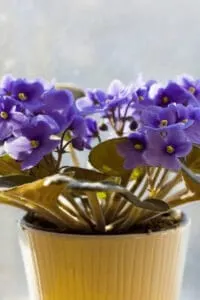
African Violets are not easy to care for
Bonsai
Bonsai trees are basically miniature trees that you can grow at home.
The art of Bonsai has found its way from Japan to the homes of plant enthusiasts from all over the world.
However, taking care of Bonsais is certainly not an easy task.
First of all, one needs to understand that many trees are not suitable to be cultivated as Bonsais in the first place.
There are only a couple of trees that make for good Bonsais. Two of them are certainly the Ficus Bonsai and the Fukien Tea.
In order to keep these little trees happy & thriving, careful care is an absolute must.
For instance, you need to make sure that these bonsais get a good amount of light and you will also need to cultivate them in special soil that is soil specifically for bonsai trees.
To sum up, cultivating Bonsais is certainly a very fulfilling hobby, yet it is connected with a certain amount of work and dedication.
To make sure that your Bonsai is thriving as it is supposed to be, please have a look at our in-depth Bonsai care article.
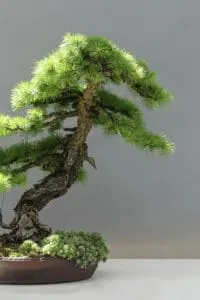
Bonsai are unvorgiving when it comes to plant care
Boston Fern (Nephrolepsis exaltata)
Let’s talk about the infamous Boston fern!
The Boston fern is certainly a good candidate for the award: “The most difficult houseplant to grow…ever”.
Ferns are generally known as very finicky houseplants. If they don’t receive the care they are asking for, things can get really problematic real quick.
You wouldn’t be the first plant parent that is getting very upset because his Boston fern just happened to die the other day…for some unknown reason.
That said, you will definitely need to keep a close eye on this fern if you want to see it happy & thriving.
What’s more, you’d better read our article on the Boston fern, so that you can provide it with the best care possible.
Your Boston fern will definitely thank you for that!
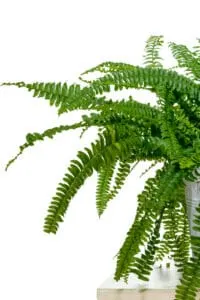
Boston Ferns are known to be fussy
Croton (Croton variegatum)
Crotons are out-of-this-world-looking houseplants. While some love it for its extremely colorful foliage, others dislike it for the very same reason.
And there’s yet another reason why you might not like Crotons: They are little DIVAS.
So, if you are up for a challenge, try some Crotons!
Oh, and if you do so, don’t forget to read our plant care article on Crotons!
Reading through that article will certainly increase your chances of keeping this crazy-looking tropical plant alive!
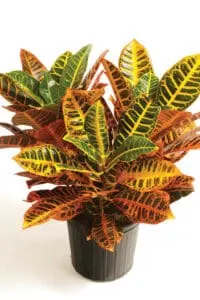
Crotons are hard to grow
Gardenia
Gardenias are not exactly low-maintenance houseplants. They don’t like to be neglected at all.
They don’t like low humidity either. Also, they don’t like too much sunlight.
In fact, there are a whole lot of things that Gardenias don’t like.
And as far as temperatures go, Gardenias like cool nights 60°F (16 degrees Celsius) and warmer temperatures during the day of around 73°F (23 degrees).
To put it simply: Gardenia Care is pretty difficult. And flower buds will often fail to form if you don’t respect the temperatures as outlined earlier on.
Or maybe they will indeed form but will fall off later. That could be due to overwatering. There’s really a lot that can go wrong with this beautiful evergreen shrub.
But the sheer beauty of Gardenias, its creamy-white flowers, and the intoxicating fragrance make it all worth it, right?
One thing’s for sure, though:
If one day, you’ll see your Gardenia blooming (usually happens in late spring and then again in fall), you should consider yourself really really lucky.
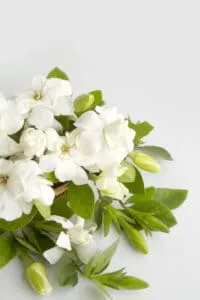
Gardenia can be a lot of hassle
Maidenhair Fern (Adantium raddianum)
Earlier on in this article, we have already stumbled upon the drama queen named “Boston fern.”
It just so happens that not only Boston ferns are hard to keep alive but also other ferns such as the Maidenhair Fern (and many other types of ferns) are very demanding and, unfortunately, too easy to kill.
Ferns in general should always be part of a list of hardest houseplants to grow.
So, what does make the Maidenhair fern so tricky to grow?
First of all, the Maidenhair fern needs a lot of humidity to survive and thrive. If you won’t bless this fussy fern with high humidity levels, it certainly won’t last long.
So, if you are indeed accepting the challenge and aspire to cultivate this fussy fern as an indoor houseplant, make sure to keep it in a humid environment.
The bathroom is an ideal place for the Maidenhair fern, as this is typically the room where the humidity is the highest.
Apart from that, it needs to be pointed out that you should cultivate your Adantium raddianum in a shady spot.
Direct sunlight won’t be forgiven by this plant and could literally kill your fern for good.
Last but not least, your Maidenhair fern is a moisture-loving plant.
Keep the substrate moist. Water again when the top layer of soil (about 2” or 5cm) is dry.

Maidenhair ferns or ferns in general are hard to grow
Polka Dot Begonia (Begonia Maculata)
As beautiful and special the Polka Dot Begonia looks, as hard it is to provide it with the right care and they are therefore among the hardest houseplants to grow.
And rest assured: If the right care is not provided, your Polka Dot Begonia will surely let you know (in some way or another).
So what does it take to make and keep this species of Begonia happy?
There are really a couple of things to keep in mind here.
First of all, The Polka Dot Begonia is a tropical plant. And tropical plants typically like a good deal of humidity. That’s certainly true for Begonia maculata.
Secondly, watering your Polka Dot Begonia the right way is extremely important, yet also pretty difficult.
Overwatering is a very common problem with this plant. And if that happens, the final hour of your Begonia maculata might have struck.
Also, make sure to water this houseplant from the bottom rather than from the top.
There’s really a lot that goes into Begonia maculata care, this is why we would like to encourage you to read our plant care article on the Begonia Maculata.
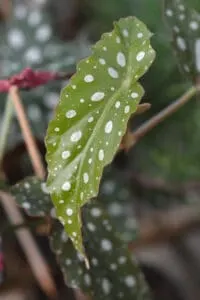
Polka Dot Begonia is a very fussy plant when it comes to the watering
Succulents are among the hardest houseplants to grow
Ok. Please don’t hate on us to actually include succulents on this “blacklist” of hardest plants to cultivate.
Some find it pretty easy to care for succulents and generally have a lot of success cultivating them.
Others, on the other hand, just can’t seem to keep these (prickly) friends alive at all.
If succulent care is extremely difficult or not might be a question that we can’t fully solve here, however, one thing about succulent care that can be highlighted is the fact that succulent care is pretty specific.
What we mean by that is the fact that succulents have very specific requirements that need to be met in order for them to thrive.
First, succulents are very picky when it comes to the right soil.
While many houseplants can be cultivated in all sorts of different soil, you will want to cultivate your succulents in a specific soil suited for succulents.
So, you might ask yourself, what does the perfect succulent soil look like?
Soil for succulents must be well-draining. This is the single most important factor when choosing the right soil for your succulents. Proper drainage is key.
This also means that you should always use pots with drainage holes when cultivating succulents.
Instead of using an all-purpose houseplant potting soil, you should look out for a dedicated succulent potting soil.
You might have heard of Miracle-Gro Potting soil, which is what many houseplants enthusiasts from all over the world use.
And you can use that for succulents as well.
Just make sure to choose the one that is specifically designed for cultivating succulents (in this case, you could go with the Miracle-Gro Cactus, Palm & Citrus Mix Potting Soil).
Another favorite amongst plant parents as far as the right soil goes is Black & Gold.
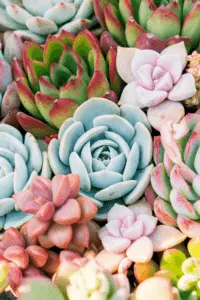
Succulents are difficult houseplants to grow
What are the hardest houseplants to grow? Your Call!
Now, it feels fair to say that the question about which houseplants are the most difficult to grow depends on various factors.
While Eric just can’t keep his Croton alive, Monica might have no problems with Croton Care whatsoever.
Well, this could be due to Eric having a black thumb but it could also just very well be that Eric is living in an environment that makes it difficult for him to see his Croton thrive.
That said, opinions on which plants are hardest to keep alive certainly differ from one person to the other and it doesn’t make a whole lot of sense to try to come up with just one definite list of “Hardest Houseplants to Grow.”
This is why we would like to hear from your perspective, which YOU think is the hardest leafy friend to keep alive. Please vote! We value your opinion.
Frequently Asked Questions About Hardest Houseplants to Grow
Which is the hardest houseplant to grow?
It is impossible to determine which is the absolute hardest houseplant to grow, as this depends on too many factors. For instance, somebody that is living in a tropical environment might not have a lot of problems growing Calatheas (a tropical plant), while other people that live in colder climates might have a hard time cultivating Calatheas. To sum it up, the challenges that one is facing when cultivating houseplants are very different depending on the climate, the location, and various other factors.
Are ZZ plants hard to grow?
Zamioculcas Zamiifolia, aka the ZZ plant, is very easy to grow. It is actually one of the easiest houseplants to grow together with Sansevierias, Pothos, Snake plants & Spider plants.
Are Chinese Evergreens hard to grow?
Chinese Evergreen plants are very easy to grow. They are not picky about the soil, they thrive well in lower light conditions & even though they do like some humidity, they can also thrive in less humid environments.
Are there ferns that are not so difficult to grow indoors?
Ferns are generally pretty difficult to grow. This especially holds true for the Boston fern and also the Maidenhair fern. There are also a couple of ferns that are considered somewhat less difficult to cultivate indoors, such as the Staghorn fern.
Conclusion About Hardest Houseplants to Grow
It’s difficult to name the hardest houseplants to grow because a lot of it depends on how you care for your houseplants, how houseplant-savvy you are, what the environmental conditions are that you are providing, and of course personal preferences and habits.
However, there are houseplants such as ferns, succulents in general, and other plants such as the croton plant that are mentioned over and over again being fussy.
Plants that require specific soil, are sensitive when it comes to watering and temperature and of course, humidity are generally hard to grow.
What are the hardest houseplants to grow for you? We would love to hear from you!

Daniel has been a plant enthusiast for over 20 years. He owns hundreds of houseplants and prepares for the chili growing seasons yearly with great anticipation. His favorite plants are plant species in the Araceae family, such as Monstera, Philodendron, and Anthurium. He also loves gardening and is growing hot peppers, tomatoes, and many more vegetables.

